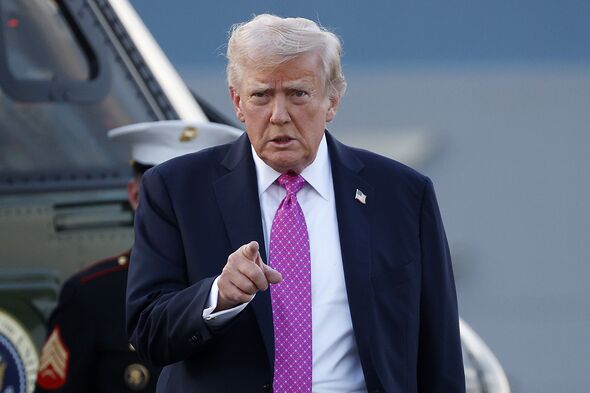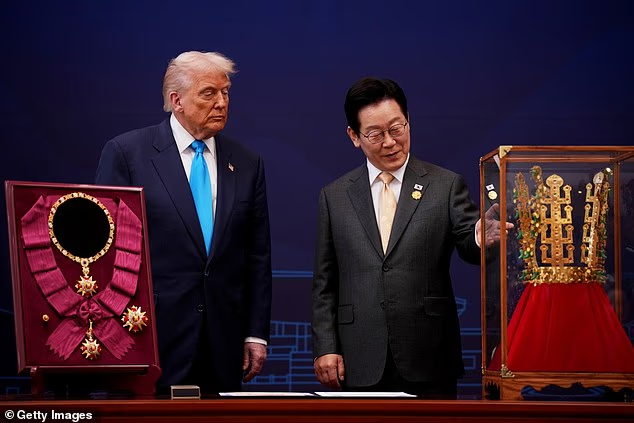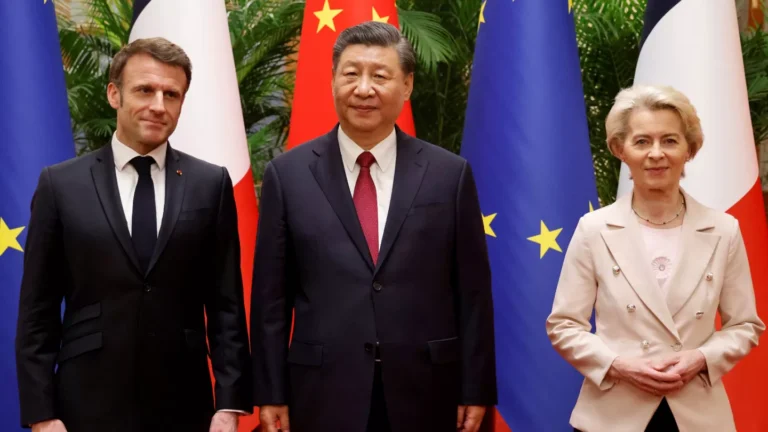
The Middle East, a land steeped in history and often fraught with conflict, once again turns its gaze towards a pivotal moment. Today, United States President Donald Trump arrived in Israel, a visit underscored by an ambitious goal: to personally oversee the implementation of his administration’s much-discussed Gaza peace plan. This endeavor, inherently complex and laden with historical baggage, marks a significant diplomatic push, aiming to reshape the geopolitical landscape of one of the world’s most contested regions. President Trump
The Weight of Expectation: A Plan Unveiled President Trump
For months, the “Deal of the Century,” as President Trump has often dubbed his peace initiative, has been a subject of intense speculation and careful crafting behind closed doors. Now, with his arrival on Israeli soil, the plan transitions from conceptual framework to potential reality. The details, though previously guarded, are expected to be front and center in discussions with key regional leaders. This particular visit signals a tangible shift, moving beyond preliminary talks to a phase of active engagement and direct oversight from the highest office in the United States. Furthermore, the very act of President Trump’s presence emphasizes the high stakes and the personal commitment he is bringing to this formidable challenge.
A Diplomatic Tightrope Walk: Navigating Complexities
The path to peace in the Israeli-Palestinian conflict is notoriously intricate, characterized by deep-seated historical grievances, competing narratives, and profound emotional ties to the land. Therefore, President Trump’s mission is akin to walking a diplomatic tightrope. He must carefully balance the security concerns of Israel with the aspirations for statehood and self-determination of the Palestinian people. This necessitates not only astute negotiation but also a profound understanding of the nuanced cultural and political dynamics at play. The international community, consequently, watches with bated breath, eager to discern whether this new approach can truly break decades of stalemate.
The Core of the Plan: What Does it Entail for Gaza? President Trump
While specific elements of the peace plan remain somewhat fluid, reliable sources suggest a multi-faceted approach, with a particular focus on the Gaza Strip. Gaza, a densely populated enclave, has long been a flashpoint of humanitarian concerns and military confrontations. Consequently, any viable peace initiative must address its unique challenges. Early indications suggest the plan may include substantial economic investment aimed at revitalizing Gaza’s struggling infrastructure and creating employment opportunities. This economic stimulus is intended to foster stability and improve living conditions, thereby potentially reducing the impetus for conflict. Moreover, there is speculation regarding new security arrangements and border control mechanisms, designed to ensure both Israeli security and a degree of autonomy for Gaza. The ultimate success, however, hinges on acceptance from all involved parties.

Key Players and Their Stances: A Symphony of Voices
The realization of any peace plan, especially one of this magnitude, is contingent upon the cooperation and buy-in of numerous stakeholders. Firstly, Israeli Prime Minister Benjamin Netanyahu will undoubtedly be a central figure in these discussions. His government’s perspective, prioritizing national security and recognizing existing settlements, will heavily influence the negotiations. Secondly, Palestinian Authority President Mahmoud Abbas and other Palestinian factions will also play a crucial role. Their willingness to engage with the plan, particularly concerning issues of territory, refugees, and Jerusalem, will be paramount. Beyond these primary actors, neighboring Arab states, including Egypt and Jordan, hold significant sway. Their historical ties and strategic interests in the region mean their support, or indeed their reservations, could profoundly impact the plan’s trajectory. Furthermore, the reactions of influential international bodies like the United Nations and the European Union will also factor into the overall reception and feasibility of the proposals.
Historical Precedents and Lessons Learned: A Look Back President Trump
Throughout history, numerous attempts have been made to broker peace between Israelis and Palestinians. From the Oslo Accords to the Camp David summits, each endeavor offered valuable lessons, both in success and failure. President Trump’s team, therefore, must surely have delved into these historical precedents. Learning from past missteps, particularly regarding trust-building and managing expectations, is crucial. Moreover, understanding the evolution of demands and red lines from both sides over the decades can provide invaluable context. This historical perspective, consequently, should inform the present strategy, aiming to avoid repeating past errors while building upon any previous successes.
The Role of Economic Incentives: A Foundation for Peace?
A significant component of the Trump administration’s approach appears to be the strategic use of economic incentives. The rationale is straightforward: by improving economic conditions and offering tangible benefits, the daily lives of ordinary Palestinians can be enhanced, thus creating a greater stake in peace. This strategy posits that economic stability can serve as a powerful antidote to radicalization and discontent. Plans for large-scale infrastructure projects, investment in technology, and job creation initiatives are reportedly on the table. However, critics argue that economic prosperity alone cannot resolve fundamental political questions. Therefore, striking a balance between economic inducements and addressing core political grievances will be critical to the plan’s overall acceptance.
Security Concerns: A Paramount Consideration for Israel
For Israel, security remains an unshakeable priority. The constant threat of rocket fire from Gaza and concerns about militant activity deeply inform their approach to any peace proposal. Consequently, the Trump administration’s plan must offer robust and credible security assurances to Israel. This could involve innovative monitoring technologies, demilitarization agreements, and internationally supervised security zones. The Israeli public, deeply scarred by past conflicts, will scrutinize these security provisions with immense care. Any perception of vulnerability could swiftly undermine support for the plan within Israel.
Palestinian Aspirations: The Quest for Statehood
On the other side of the equation are the enduring aspirations of the Palestinian people for an independent, sovereign state. For many Palestinians, the peace plan’s success will be measured by its ability to deliver on this fundamental goal. The issues of borders, the status of Jerusalem, and the right of return for refugees are deeply emotional and politically charged. The Trump administration faces the formidable task of presenting a framework that offers a credible path towards self-determination for Palestinians, while also addressing Israeli concerns. This will undoubtedly be one of the most contentious aspects of the negotiations.
The Road Ahead: Challenges and Opportunities
President Trump’s visit to Israel marks merely the beginning of what promises to be a long and arduous journey. The challenges are undeniable: overcoming decades of mistrust, bridging deeply entrenched ideological divides, and securing concessions from all parties. Nevertheless, opportunities also abound. The sheer commitment of a U.S. President to personally drive this initiative provides a rare window for progress. The potential for regional economic growth, improved human rights, and a lasting peace could fundamentally transform the Middle East for generations to come. Ultimately, the success of this audacious undertaking will depend not only on the diplomatic prowess of the U.S. administration but also on the willingness of both Israelis and Palestinians to seize this moment and forge a new path forward.
What’s Next? The Immediate Agenda
Following his arrival, President Trump is expected to engage in a series of high-level meetings. Initial discussions will likely involve Prime Minister Netanyahu and other senior Israeli officials. These talks will focus on the security aspects of the plan and the proposed economic initiatives for Gaza. Subsequently, there will be efforts to engage Palestinian representatives, although the exact format and participants remain subject to ongoing diplomatic maneuvering. Furthermore, the President may also hold consultations with leaders from key Arab nations to garner their support and address any concerns they might have. The coming days are thus poised to be a flurry of diplomatic activity, with every statement and meeting holding significant weight for the future of the region.
The World Watches: International Reactions
The international community is observing President Trump’s visit and his peace initiative with a mix of hope and skepticism. Many nations recognize the urgent need for a resolution to the Israeli-Palestinian conflict, yet past failures have tempered expectations. European Union leaders, for example, have consistently advocated for a two-state solution based on pre-1967 borders, and they will be scrutinizing whether the new plan aligns with this long-held position. Conversely, some nations, particularly those with strong alliances with the U.S. or Israel, may offer more immediate support. The United Nations will also play a crucial role, potentially providing a platform for broader international consensus or, conversely, highlighting areas of divergence. Therefore, the global reaction will be a significant factor in shaping the plan’s perceived legitimacy and its ultimate chances of success.
A Moment of Truth for the Middle East
President Donald Trump’s arrival in Israel to personally oversee the Gaza peace plan represents a significant, perhaps even audacious, diplomatic gamble. The stakes are incredibly high, with the potential for either a historic breakthrough or a reinforcement of existing impasses. The path ahead is fraught with challenges, yet the very act of direct presidential engagement brings a unique gravity to the endeavor. As discussions unfold and the details of the plan come into sharper focus, the world will be watching to see if this “Deal of the Century” can indeed usher in a new era of peace and stability for a region that has long yearned for it. The hope is that through concerted effort, negotiation, and a willingness to compromise, a sustainable future can at last emerge from the shadows of conflict.
Read More Articles Click Here. Read Previous Article Click Here.





